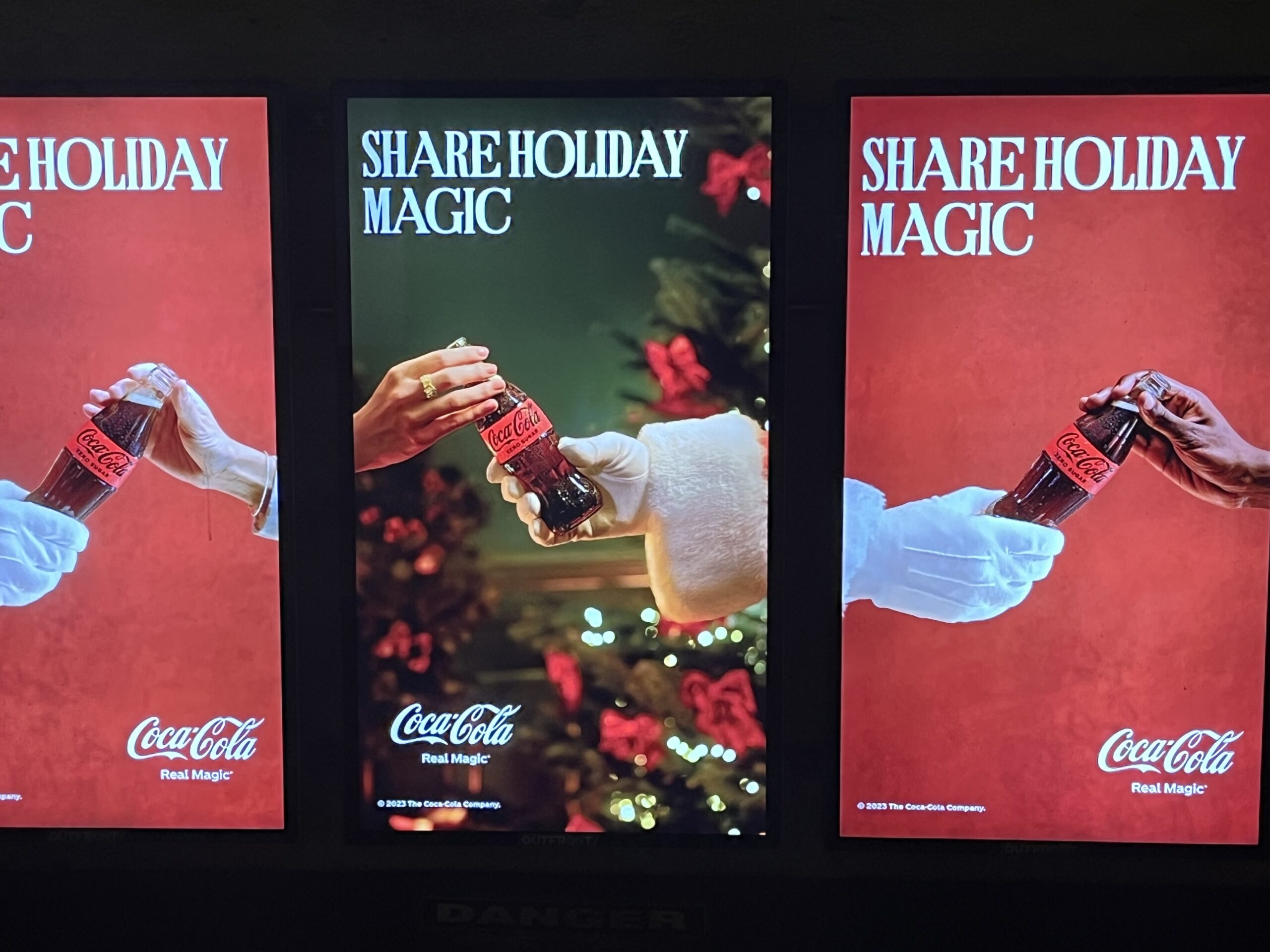Over the course of two months, Story of Stuff worked with its global community of Changemakers to crowdsource Coca-Cola commercials, ads and imagery displaying the company’s products. Coca-Cola is one of the world’s biggest advertisers spending $4 billion every year to advertise its products and is known as one of the world’s most recognized brands. It is also the world’s biggest plastic polluter as identified in #BreakFreeFromPlastic’s Global Brand Audits. We set out to analyze a sample of Coke’s adverts with a view to two things:
- How is the company packaging its packaging? In other words, how is the company presenting the packaging it uses for its products in its advertising?
- What does the way the company is positioning its packaging say about the image it wants to project for itself, its customer preferences or the company’s awareness of public concerns about its use of plastic?
Featured image submitted by Sarah in Massachusetts, United States
Summary of Findings
- We received 80 submissions of Coca-Cola ads from around the world including over a dozen countries from France to French Polynesia and Canada to Chile.
- Ads were received in a wide range of formats: posters, billboards, TV commercials, online video ads, display ads, and high-profile event and transportation spaces. These ads came in a variety of contexts: sporting arenas, universities, Disneyland, Star Wars Land, UNESCO world heritage sites, ferries, trucks, airplanes, EV charging stations, stores and small markets alongside a range of digital ad spaces.
- Results of the submissions:
- Glass was used in the majority of the ads, in 54% of the images submitted.
- Plastic was used in 40% of the total images.
- Aluminum was used in 5% of the total images.
- Compare this to Coke’s real-world packaging mix:
- 47% plastic
- 25% aluminum/steel
- 10% in glass
- Comparing the sample of submissions we received to Coca-Cola’s use of glass in its packaging; you are five times more likely to see a coke in a glass bottle in an ad than you are to see Coke’s product in that material.
- Coke’s plastic awareness: where ads did depict plastic, 86% of those examples included messaging about recycling (100% recyclable, World Without Waste, etc) or refill.
Insights: Revealing Case Studies
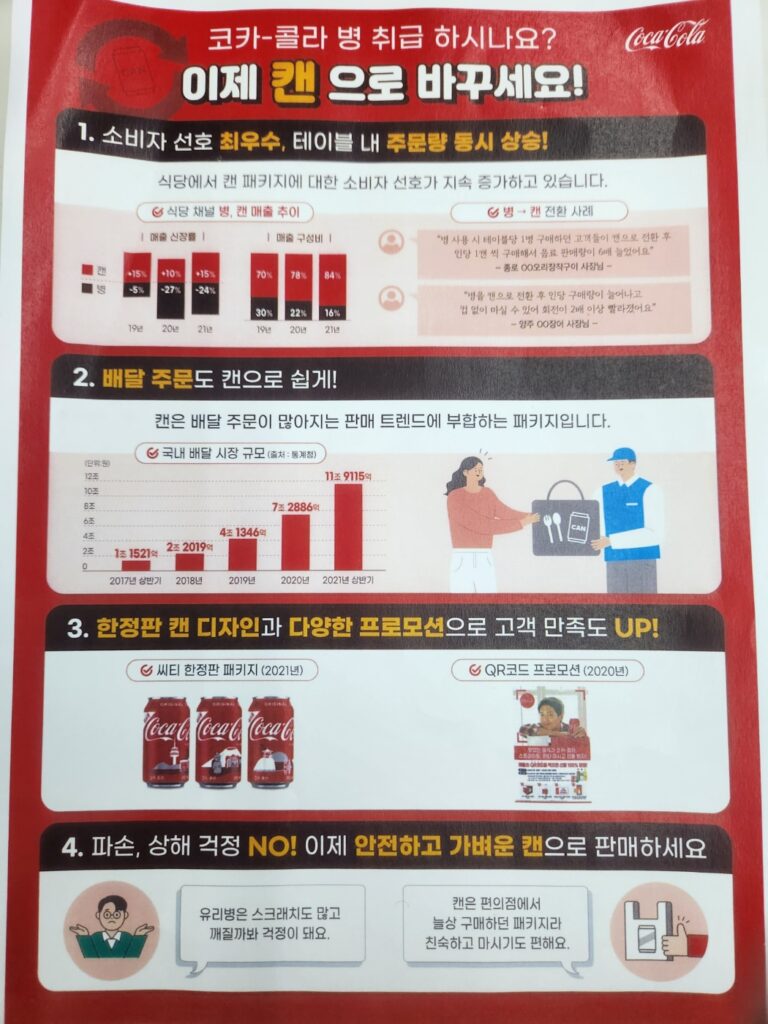
South Korea
In one example in South Korea, Coke has posters designed for the retailers and vendors selling their product, urging them to shift from reusable bottles to single-use containers.
Submitted by Kumsook in South Korea
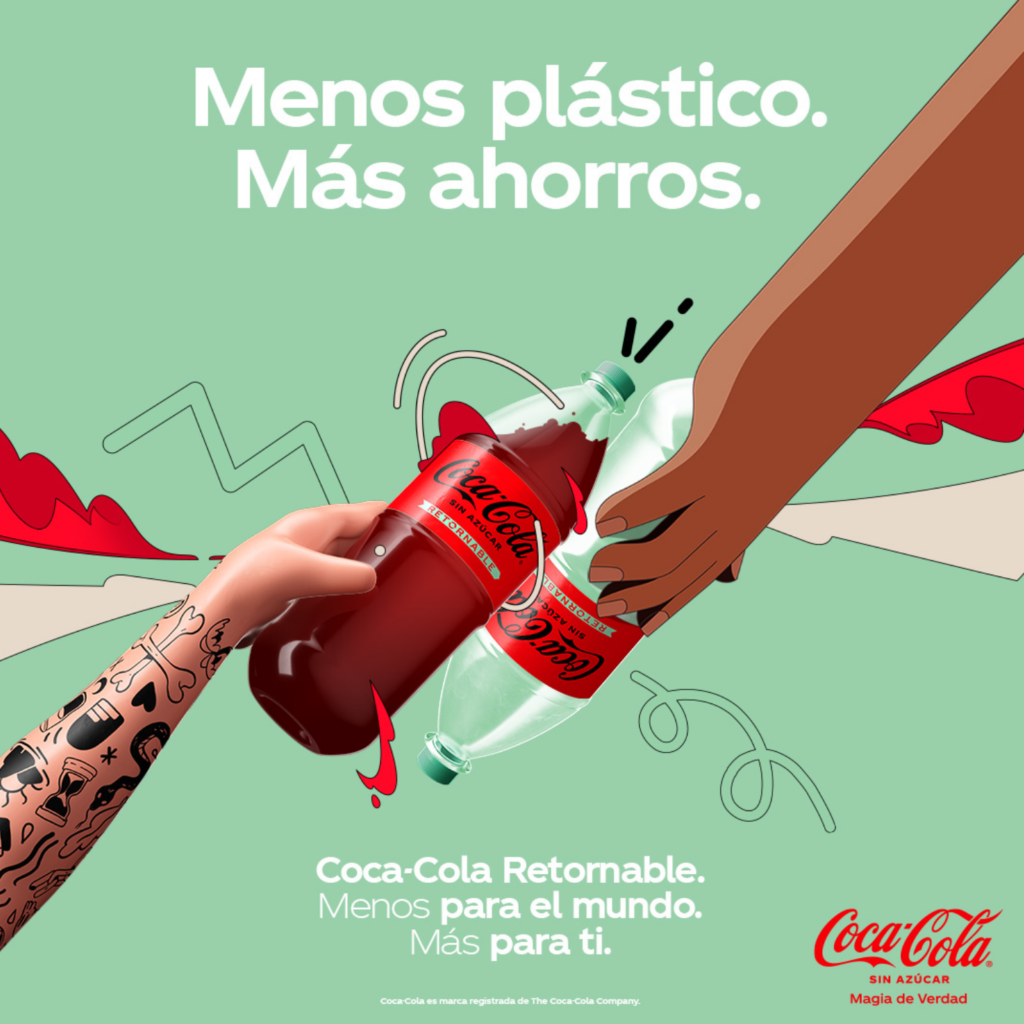
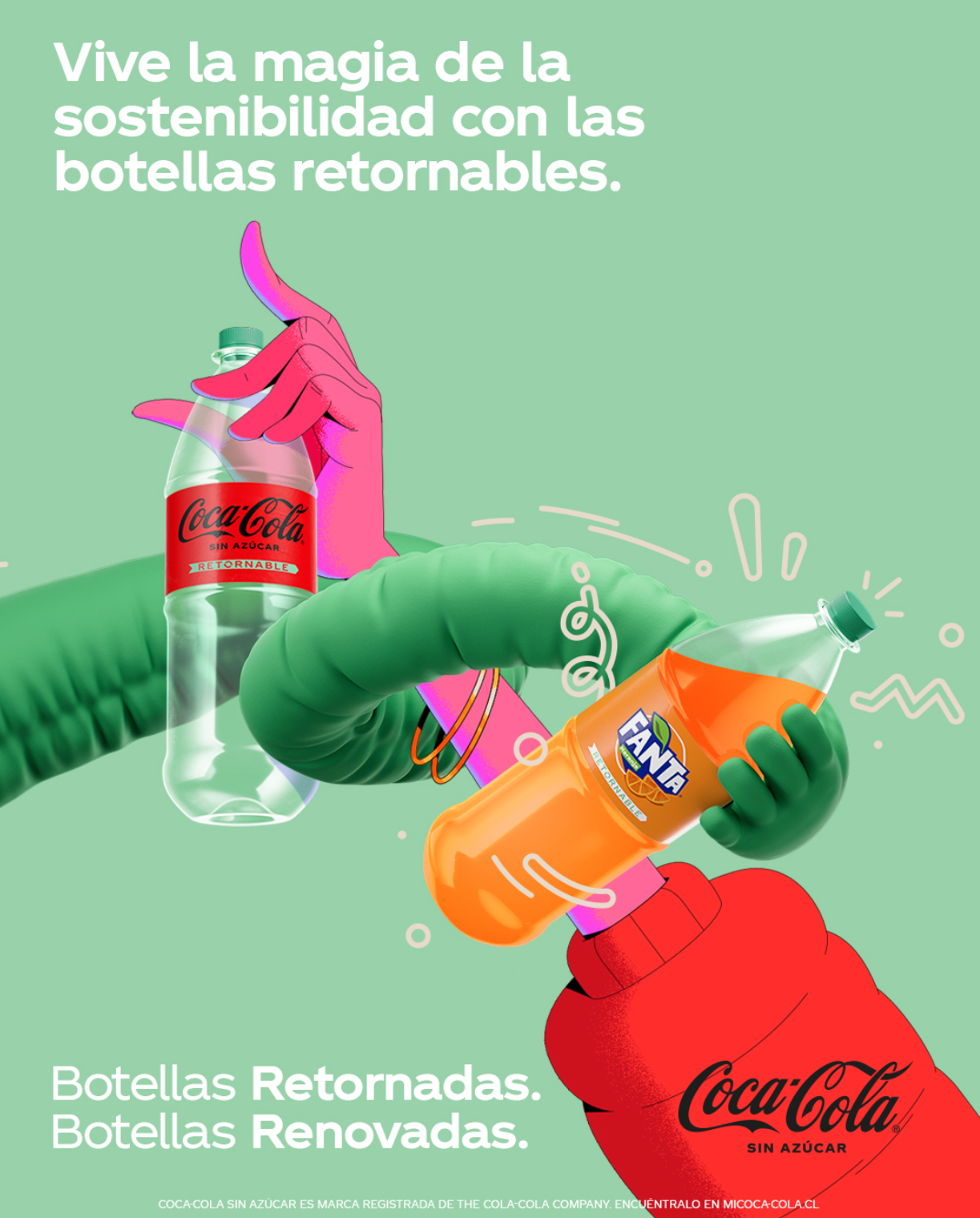
South America
In South America where reusable bottles are in wide circulation, the ads celebrate that reusable bottles use less plastic and celebrate the sustainability associated with reusable glasses.
Photo 1: “Less plastic. more savings.” “Returnable Coca-Cola, less for the planet, more for you.”
Photo 2: “Live the magic of sustainability with returnable bottles”
Submitted by Fernanda in Chile
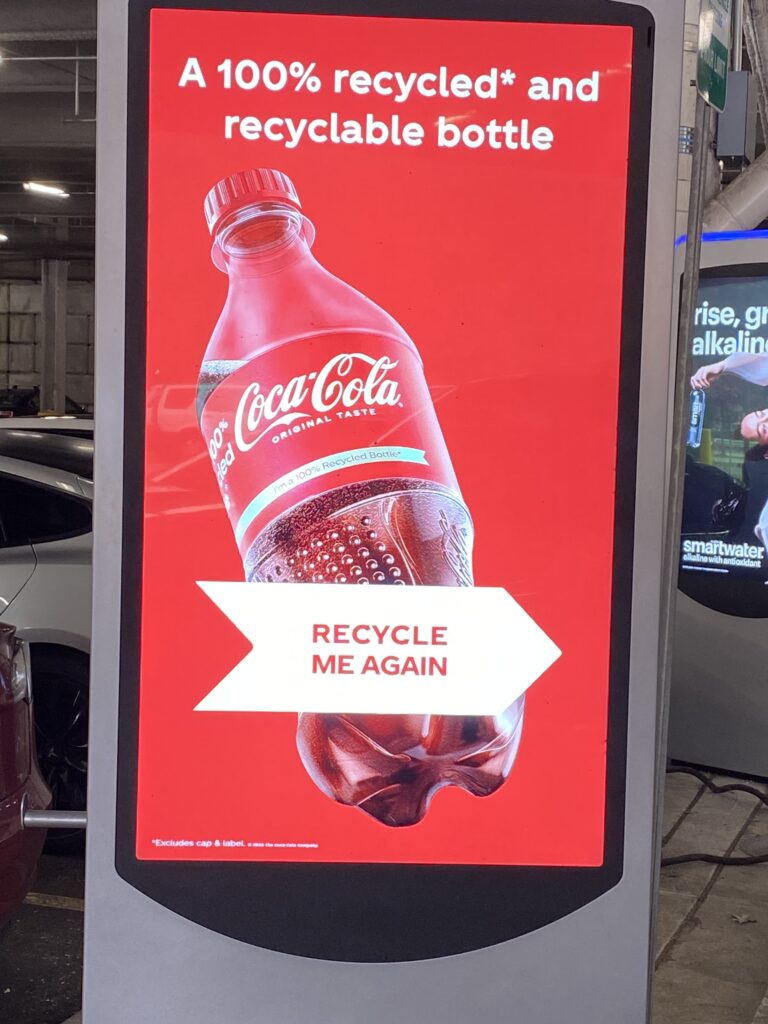
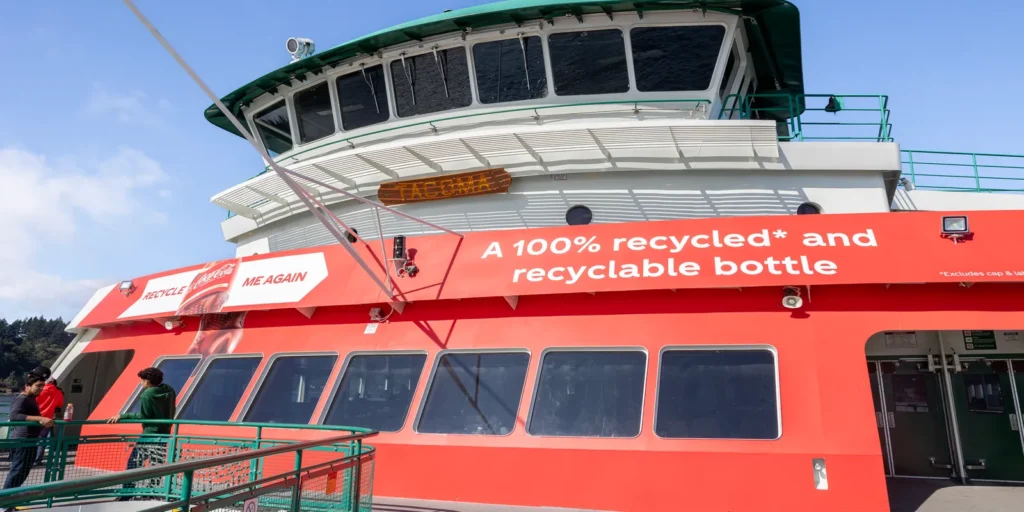
United States
In many ads displaying plastic bottles, Coke is at pains to explain that the plastic is recycled.
Submitted by Madeleine in New York and Brenda in Washington
Conclusions & Analysis
There are several conclusions we can draw from this survey of Coca-Cola ads:
- Coca-Cola is acutely aware of public concern around its use of plastic. This is evident in both positive messaging around its reusable bottles; while for ads showing plastic bottles, the company is at pains to convey that the plastic bottles it uses are recyclable. Coke even takes this logic a step further by implying consumers hold responsibility for what happens to the plastic bottles by use of phrases like “please recycle me”, even though the company has spent decades blocking effective recycling and reuse laws.
- Coke disproportionately uses the image of its glass bottle. Coke effectively brands itself around a glass bottle it rarely sells. It likely does this for several reasons:
- The use of glass is synonymous with Coke’s vintage bottle design. Recent marketing analysis has pointed to the power of marketing nostalgia. This is relevant in the sense that the vintage glass bottle pre-dates plastic but it also pre-dates the era of plastic pollution we are confronted with today.
- Coke’s use of its vintage bottle and its nostalgic references overshadow another reason it’s useful for the company: its association with glass helps to disassociate the company from plastic. This is convenient for the world’s biggest plastic polluter.
- There are well-established trends that speak to improved taste and consumer preference associated with Coca-Cola’s classic ‘Mexican Coke’ sold in reusable glass bottles.
- This is likely part of Coca-Cola’s arsenal of tactics to deflect, delay and derail regulation of its packaging generally which has wreaked environmental havoc for decades.
Watch the Video
Learn More
Watch our investigative short documentary EXPOSED: How Coke Killed the Refillable Bottle and take action with our Bring Back Refill campaign.

